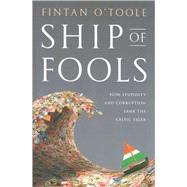Ship of Fools : How Stupidity and Corruption Sank the Celtic Tiger

Ship of Fools : How Stupidity and Corruption Sank the Celtic Tiger
- ISBN 13:
9781586488819
- ISBN 10:
1586488813
- Edition: 1st
- Format: Hardcover
- Copyright: 03/02/2010
- Publisher: INGRAM
.svg) Rent
From $10.69
Rent
From $10.69
List Price $36.00 Save
| TERM | PRICE | DUE |
|---|---|---|



List Price $36.00 Save $17.44
In Stock Usually Ships Within 24-48 hours.
We Buy This Book Back!
Free Shipping On Every Order
List Price $36.00 Save $1.25
Print on Demand: 2-4 Weeks. This item cannot be cancelled or returned.
We Buy This Book Back!
Free Shipping On Every Order
Note: Supplemental materials are not guaranteed with Rental or Used book purchases.
Extend or Purchase Your Rental at Any Time
Need to keep your rental past your due date? At any time before your due date you can extend or purchase your rental through your account.






